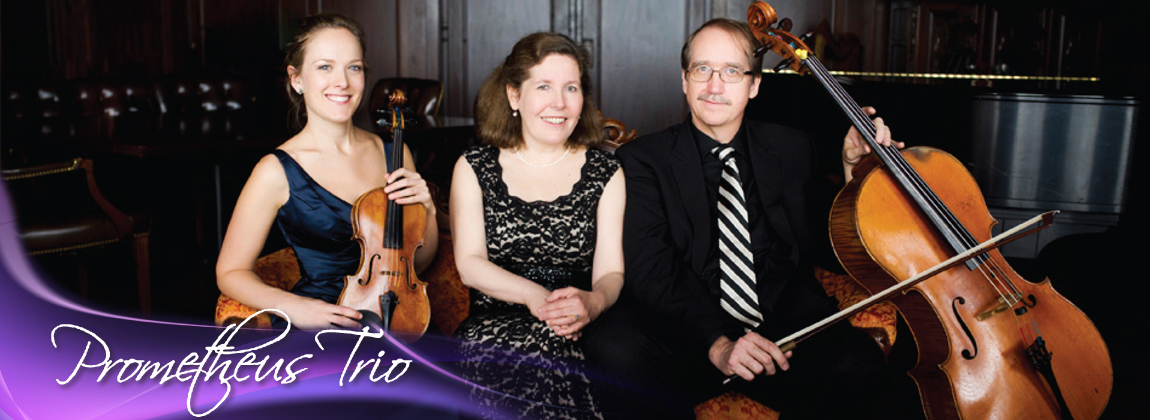Oh, Those Gorgeous Modulations
The Prometheus Trio performs a very varied program: Haydn, Brahms, Faure and Debussy.

L to R: Margot Schwartz, Stefanie Jacob, Scott Tisdel. Photo provided.
Works by Franz Josef Haydn (1732-1809), the most prolific composer in the piano trio form, and Gabriel Fauré (1845-1924), who wrote only one such work, highlight the next concert by the Prometheus Trio. Guest violinist Yuka Kadota performs with Trio founders Stefanie Jacob (piano) and Scott Tisdel (cello) at 7 p.m. Monday, Feb. 13.
The program opens with Haydn’s Trio in F Major, Hob. XV:40, one of nearly four dozen piano trios he wrote over more than 30 years. In Haydn’s trios, the violin and cello typically double the keyboard part, which provides the bulk of the melodic material. Pianist Charles Rosen writes that this pattern likely evolved because the piano of Haydn’s day “was fairly weak and ‘tinkling’ in tone, and benefited from the tonal strengthening of other instruments.’”
Prometheus Trio pianist Jacob estimates the ensemble has performed about half of Haydn’s 45 piano trios and is now on a quest to play them all. She cites “the variety, gorgeous modulations, and inventive harmonic progressions” that make these pieces appealing to performers and audience alike.
In contrast to Haydn, Fauré composed only one piano trio, Op. 120 in D minor, completing it the year before his death. Originally envisioning a work for piano, cello, and clarinet, Fauré abandoned that idea for the more traditional piano/violin/cello combination. Writer Basil Smallman describes the resulting piece as having “a studied simplicity of texture, a gentle, unostentatious piano style, and a seamless continuity in the presentation of his ideas…. [Fauré] allows his music to unfold gradually, in the manner of a skilled organ improvisation.” The three movements include both quiet song-like passages and dramatic storms.
The Prometheus Trio seldom programs arrangements, but this concert includes two. Johannes Brahms (1833-1897) composed his String Sextet No. 2, Opus 36, for two violins, two violas, and two cellos. He wrote at a time when instrumental works were frequently arranged for four-hand piano, allowing people to play concert pieces at home. Brahms himself arranged the sextet for four-hand piano. He also entrusted his friend Theodor Kirchner (1823-1903) to reconfigure the sextet as the Trio nach dem Streichsextett Nr. 2, Op. 36, which appears on the Prometheus program.
Perhaps, Jacob speculates, it was easier to assemble a trio than a string sextet. Thus, the Kirchner arrangement for three players may have assured that the piece would be performed more frequently. Whatever the reason, Jacob counts the composition among her favorite chamber pieces, lauding its beautiful melodies, cello solos, complexity, and lyricism.
The second arrangement on the program presents excerpts of music composed by Claude Debussy (1862-1918) for the opera Pelléas et Mélisande, arranged for piano trio by Belgian composer Hubert Mouton (1872-1954).
The Prometheus Trio performs at 7 p.m. Monday, Feb. 13, at the Wisconsin Conservatory of Music, 1584 N. Prospect Ave. Tickets are available online. Complimentary parking is available at Milwaukee Eye Care, 1684 N. Prospect Ave, one block north of the Conservatory.




















